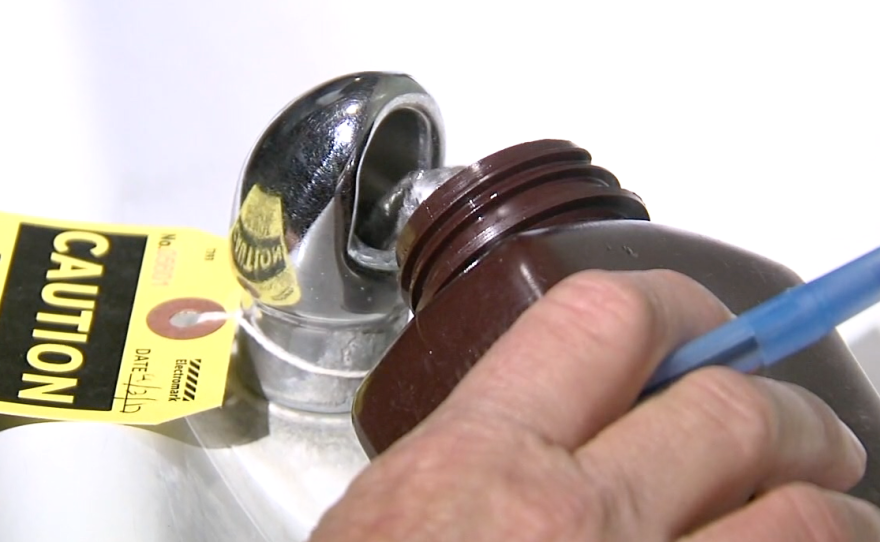San Diego public utility workers began testing water for lead at San Diego Unified schools this week. It's been widely reported a therapy dog at a school in Southcrest sniffed out the potential lead problem. But a district spokesman says the dog actually led custodians to discover another contaminant — one the city water tests won't detect.
Custodians at Emerson-Bandini Elementary School discovered old PVC pipes were leaching vinyl chloride into the drinking water after the dog refused to drink from its bowl, said spokesman Andrew Sharp.
The district quickly brought in bottled water for the students and began replacing the pipes. Sharp said a report by a consultant hired to investigate the problem says two students felt sick after drinking water at the school, but there's not enough evidence to link their illness to the contamination.
But district and city emails obtained by NBC 7 reporter Wendy Fry say "several students experienced nausea and vomiting following consumption of water." The district has not yet provided KPBS with a copy of the report.
According to the Centers for Disease Control and Prevention, vinyl chloride can cause nausea and headaches, and more extreme exposures have been linked to cancer. But exposure to the chemical is common, especially among construction workers who handle PVC.
The district later found lead in the water at Emerson-Bandini, when the district called on the city to do more testing during repairs. Three of the ten fixtures tested showed lead levels between 22 and 38.6 parts per billion. The Environmental Protection Agency requires action when the level surpasses 15 parts per billion.
Dr. Howard Taras, the district's physician, said lead poisoning could cause developmental delays in children who are exposed over a long period of time, usually by multiple sources. He said parents shouldn't think the worst if their child comes home from school with a stomachache or headache.
"We're talking about a chronic lead exposure, meaning kids are getting lead from one or more sources in a very subtle way," Taras said. "So we're not going to expect them to have symptoms or signs that are all of a sudden going to become very acute."
In the Southcrest neighborhood where Emerson-Bandini is located, 4 percent of children tested have elevated lead levels in their blood, according to data compiled by the news service Reuters. That's higher than the national average of 2.5 percent. Children in lower-income, older communities such as Southcrest are at a higher risk of lead poisoning because of the older housing stock.
That's why city workers are starting with schools in Southeast San Diego. School buildings there tend to be older, and lead pipes weren't banned until 1986.
Crews started Tuesday at Horton Elementary School in Chollas View and plan to hit every campus in the district by summer. The results for individual schools will be made available within a week of testing on the district's website.
The tests will not detect vinyl chloride.
Sharp said the testing is voluntary for school districts and was actually in the works before the incident at Emerson-Bandini. The district began working with the city on a plan after the state launched an initiative in November to encourage more schools to test for lead. It requires water suppliers to perform the tests at no cost.
Two bills in the state legislature this year would require districts to test their schools for lead. Water suppliers and districts are not required to test for vinyl chloride.
Sharp said repairs are still underway at Emerson-Bandini, the cost of which are not yet known. He said if San Diego Unified and other districts find lead contamination is widespread, the state might step up with aid.
A California safe water advocacy group, Community Water Center, estimated more than a million of the state's children went to schools that did not meet safe water standards between 2003 and 2014.






